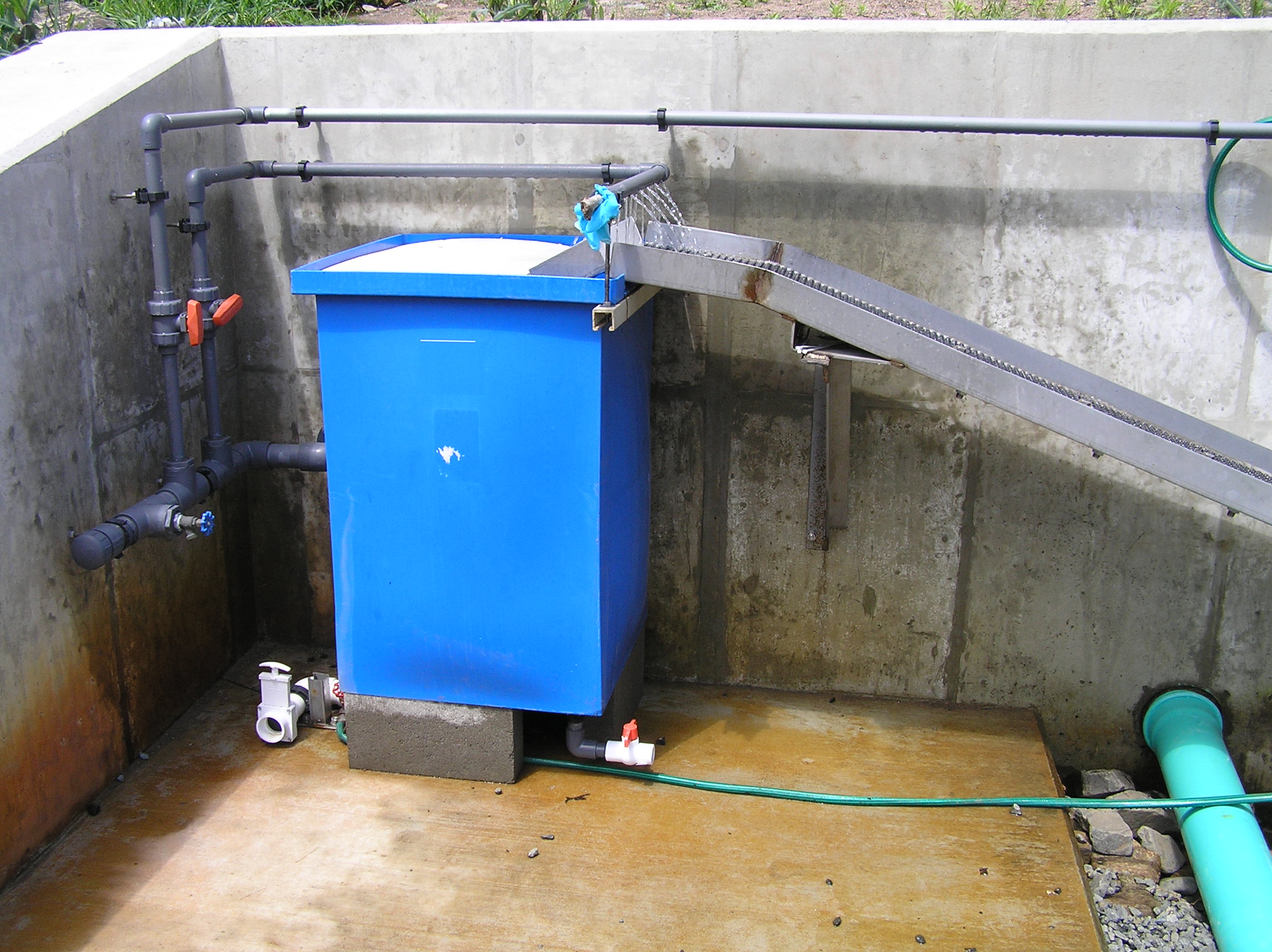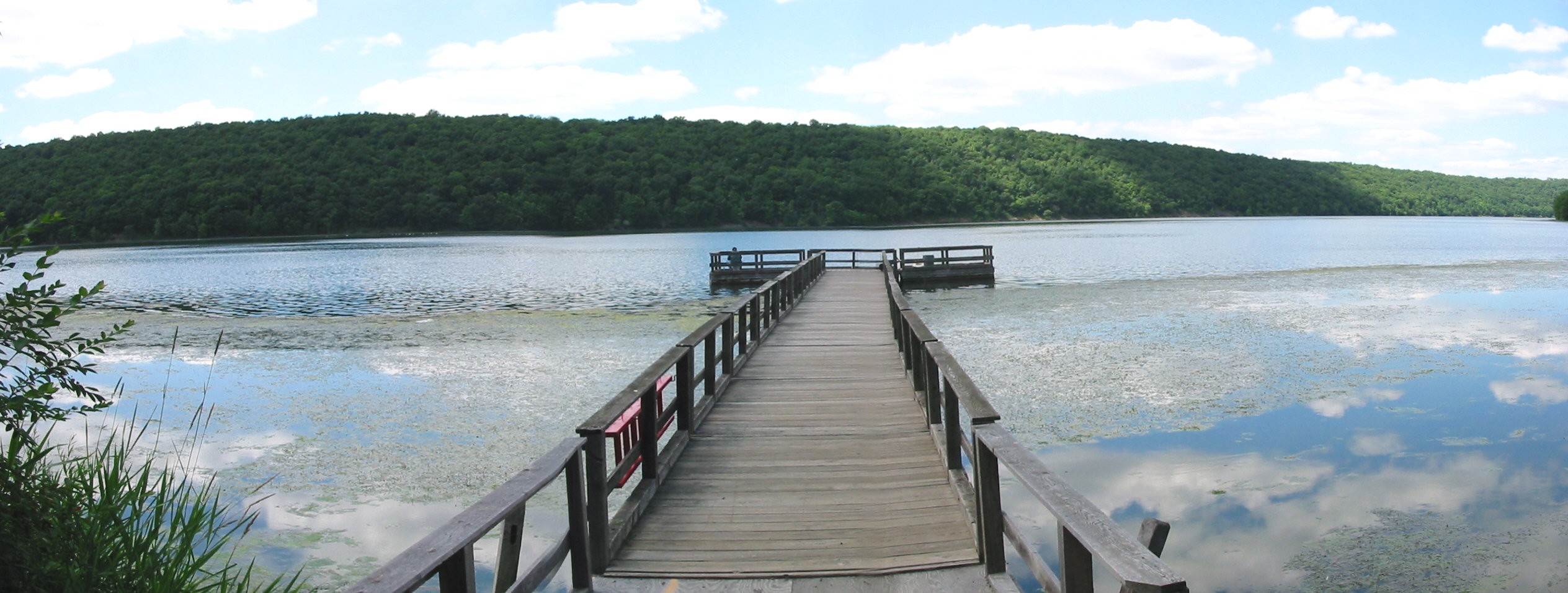This is the first installment in our “Fridays in the Field” series.
John Hudak, Environmental Planning Manager at the South Central Connecticut Regional Water Authority. Talking with Mr. Hudak is Kevin Kromash, Fridays in the Field blogger for CFE/Save the Sound.

Kevin Kromash: Welcome to the “Fridays in the Field” series, and thank you for serving as our first guest! Perhaps you can start by telling us what the South Central Connecticut Regional Water Authority is.
John Hudak: The South Central Connecticut Regional Water Authority was formed in 1980. Our predecessor was the New Haven Water Company, which was a private investor-owned utility, but we’re a non-profit, public corporation – a political subdivision of the state of Connecticut. Our mission is to provide high quality drinking water and services at a reasonable cost while promoting the preservation of watershed land and aquifers . We provide about 48 million gallons per day to a population of about 500 thousand consumers.
Kevin: What are some of the activities involved with RWA’s protection of drinking water?
John: We are involved with many categories of activities. One is source water protection; we inspect ongoing activities of businesses such as vehicle service stations, gas stations, and construction sites, as well as incidents or spills in the watershed. We also do site plan reviews of proposed development activities that come before municipal land use commissions, such as planning and zoning. We will review the proposed activities, provide some background on the watershed implications, and make recommendations.
Another area we cover is reservoir quality management. From April to November, we conduct regular water quality profiles of our active reservoirs, and use this data to optimize the quality of water that’s entering our treatment process. We also deal with environmental quality that may not necessarily impact our sources, such as downstream areas. An example is monitoring of downstream flow release requirements at our dams to maintain aquatic life. We have an eel pass at the Lake Whitney dam, and this year we are going to be constructing a fishway on a small dam on the Farm River in East Haven.

A very important source water protection activity is our land acquisition program. We own and manage over 27,000 acres of land. So that’s one critical way to protect our supplies: to keep as much of the critical lands under our control, because the quality of our source waters is definitely tied to the degree of development in the watershed. We have a forester in our department who helps manage our forests for source water protection, habitat, and overall forest health, and we provide sustainable forest products to the region.
Kevin: Is it typical for a water authority to do so much environmental work – on land protection, forestry, and fisheries?
John: I would say that in certain areas we definitely go above and beyond, certainly with the fisheries management work, some of the reservoir water quality management work, and land acquisition. Those are things that are not necessarily required, but which are in our best interest.
Larger utilities often have dedicated environmental staff that do similar things. Smaller utilities – like municipalities and smaller private companies – tend to have people who wear a few hats, and some of the hats could be about environmental or water supply protection interests. The watershed inspections are actually a state requirement. All utilities have to file an annual report with the Department of Public Health on their watershed inspections.
Kevin: To play the devil’s advocate here: if the RWA has the capacity to filter and treat the water, is the land protection necessary?
John: Well, for one, there is a long-held belief that the cleaner the source water is going into the treatment process, the cheaper the treatment is going to be, in terms of both capital investments and operational costs. In terms of more a long-term view, it is mitigating future risks and unknowns. One is uncertainty about what your watershed land use (or land use regulations) might look like in the future. There’s also the very likely potential of changes to drinking water standards over time. So what is not regulated today may be regulated tomorrow.
There are also water attributes that aren’t regulated, but relate to aesthetic concerns of our customers, like taste and odor. If you have a process, for example, that is not very robust in terms of removing dissolved compounds that come from blue-green algae, the water can have an earthy musty taste. Although the water may be compliant with drinking water standards, it still could taste bad. Those are the kind of things that can be minimized with good watershed and reservoir management.
There are also unknowns and variability with climate change. How is that going to affect water quality and quantity in the future? Owning more watershed forest land is certainly a way to mitigate those potential future impacts.

Kevin: Is the RWA doing any long term planning incorporating climate change projections?
John: We are in the early stages of looking at that. We’ve done some preliminary identification of potential risks, as part of our water supply plan that we submit to the state. There are some very good tools that EPA has recently developed to help water utilities identify threats, risks, and assets vulnerable to future climate change, and to develop adaptation strategies. We do have programs in place now that address climate change impacts, even if they weren’t necessarily developed specifically for climate change, such as business continuity planning. We fared well through the major storm events of the last couple years; our customers continued to get drinking water. That’s because of good planning, including backup power generation for our treatment and pumping facilities.
Kevin: By way of closing up, do you have any requests of the residents of your region to help make your job easier?
John: Certainly there is a lot people can do, as individuals, in terms of how they live their lives, and how they manage their own properties. I would like people to use more native landscaping and less lawn chemicals, and just think about the environment, the water supply, and sustainability as they go about their daily business.
Posted by Kevin Kromash, “Fridays in the Field” blogger for CFE/Save the Sound

Great questions!
Very interesting and informative